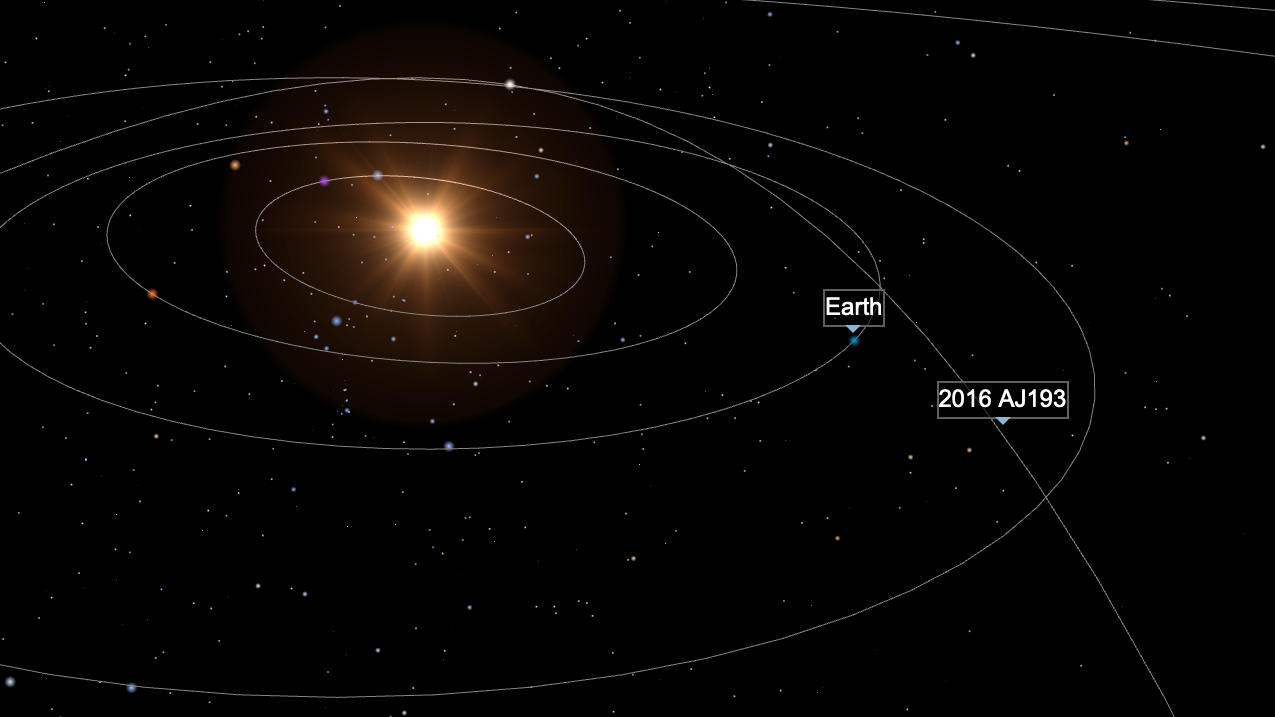
Have a telescope? Watch the sky tonight for asteroid 4 times the size of Eiffel Tower

An asteroid, taller than Dubai’s Burj Khalifa, will pass by Earth on Saturday (August 21) without causing any damage to our planet. NASA, however, has classified the asteroid, designated as 2016 AJ193, as a Potentially Hazardous Asteroid.
The celestial body is about 1.4 km wide and 4,500 feet in diameter and is expected to miss Earth by 212,971,5 miles at 3:10 pm GMT (8:40 pm IST) on Saturday. It is traveling at a speed of 26.17 km per second (94,208 km/hour) relative to Earth.
Also read: What’s a lunar wobble and does the Earth rock too?
NASA has classified it as a Near-Earth Asteroid. Eddie Irizarry, a NASA Solar System Ambassador since 2004, however, said, there is no need to worry. “At its closest to Earth, asteroid 2016 AJ193 will sweep some 8.9 times the moon’s distance from us. That’s a huge and safe distance, but relatively close for a 1.4-km space rock. It’ll be close enough that both amateur and professional astronomers will be able to spot it and study it.”
This particular asteroid goes around the sun once every 6 years. It gets relatively close to the Earth’s orbit, but then travels beyond the orbit of Jupiter. The August 21 movement will be 2016 AJ193’s closest approach to Earth at least for the next 65 years, the longest period for which its orbit has been calculated.
Also read: Pineapple agroforestry can tackle climate change and biodiversity loss: Study
The asteroid was first spotted in January, 2016, by an observatory in Hawaii (US). NASA’s NEOWISE spacecraft was then used to observe the asteroid. The asteroid is very dark, but scientists are yet to figure out its rotation period, pole direction and spectral class.
NASA scientists will use radar to know more about it. “Bouncing radar signals off an asteroid enables astronomers to study the object’s shape, size and spin. Sometimes astronomers manage to acquire amazing radar images of asteroids,” said Eddie Irizarry.
The asteroid is 1.5 times the size of Burg Khalifa and 4 times the size of Eiffel Tower.
The radar signals sent to asteroid 2016 AJ193 will be transmitted from Goldstone Antenna in California, along with small radars in Australia, Spain and Italy.
Most importantly, amateur astronomers can spot the asteroid using telescopes 8-inch (20-cm) and larger. It will be visible the moment it passes in front of the stars.


